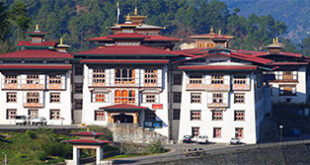The government’s initiative towards lifting poverty, promoting socio-economic development and improving the living standards of the people is likely to increase the pressure on the environment.
According to The State of the Nation report, the impact on the environment is evident by the growing human-wildlife conflict due to anthropogenic pressure on natural resources, one of the big¬gest problems the farmers face. Therefore, the Ministry of Agriculture and Forests intends to develop a comprehensive plan to ease the human-wildlife conflict.
With the increasing number of mines and quarries in the country, the report claims that waste management problems and water pollution are a matter of concern due to frequent contaminated conditions along streams and riv¬er banks leading to an unhealthy level of water quality which has been reported in the capital.
In addition, the report stressed that there is a continuous loss of forest and government reserved forest lands to developmental activities and urbanization leading to a serious sewage management issues with the growing population in new urban centres.
A major factor that adds pres¬sure on environment, according to the report, is the rapid modernization pace resulting in littering and waste dumping due to the lack of civic sense among the people.
The State of the Nation report also points to the most pressing environmental concerns today, climate change. The report states although Bhutan is not responsible for climate change, however, it is vulnerable to it.
The most discernible impact of the climate change, according to the report, is the ravaging effect of natural disasters triggered by cyclones, torrential rains, for¬est fire and windstorms all over the country resulting into the loss of lives and destruction of public and private properties.
The record as of last year shows five incidences of forest fire, two river mishaps, five wind-storms and one major accident. The State of the Nation report states that the impact of these di¬sasters shows high vulnerability and environmental fragility and the number and severity of the natural disasters are expected to increase and become even more common due to climate change.
Therefore to mitigate the effects of climate change, the country will follow the National Adaptation Program of Actions (NAPA), which was framed in 2006 as the world’s largest cli¬mate change adaptation project with Nu 712.45mn, from this year.
In efforts to reduce global warming, Bhutan has commit¬ted to phase out the use of hy-drochloroflurocarbons by 2025, ten years ahead of the Montreal Protocol schedule.
Further, the National Disaster Management Authority has been formed and convened its 38 first meeting with the Prime Minister as the chairman. The government has also directed the respective dzongkhag disaster management committees for disaster preparedness.
In addition, the report as-sure that the government is also working towards strengthening risk mitigation, implementing cost-effective and early warning systems, and enhancing disaster recovery and reconstruction ca-pabilities.
An innovative plan of the government to mitigate climate change is the launching of Clean Bhutan and Green Bhutan dedicated to the 60th birth anniversary of His Majesty the Fourth Druk Gyalpo Jigme Singye Wangchuck, recognized inter-nationally as a champion of the environment.
Clean Bhutan bears the re-sponsibility of cleaning towns, rivers and forest trails and simi-larly, Green Bhutan is aimed at planting flowers and trees in and around the towns.
Her Majesty the Gyaltsuen, the Ozone Ambassador in Bhutan, contributes time and effort in the awareness of ozone layer protection, especially among the students.
 The Bhutanese Leading the way.
The Bhutanese Leading the way.



